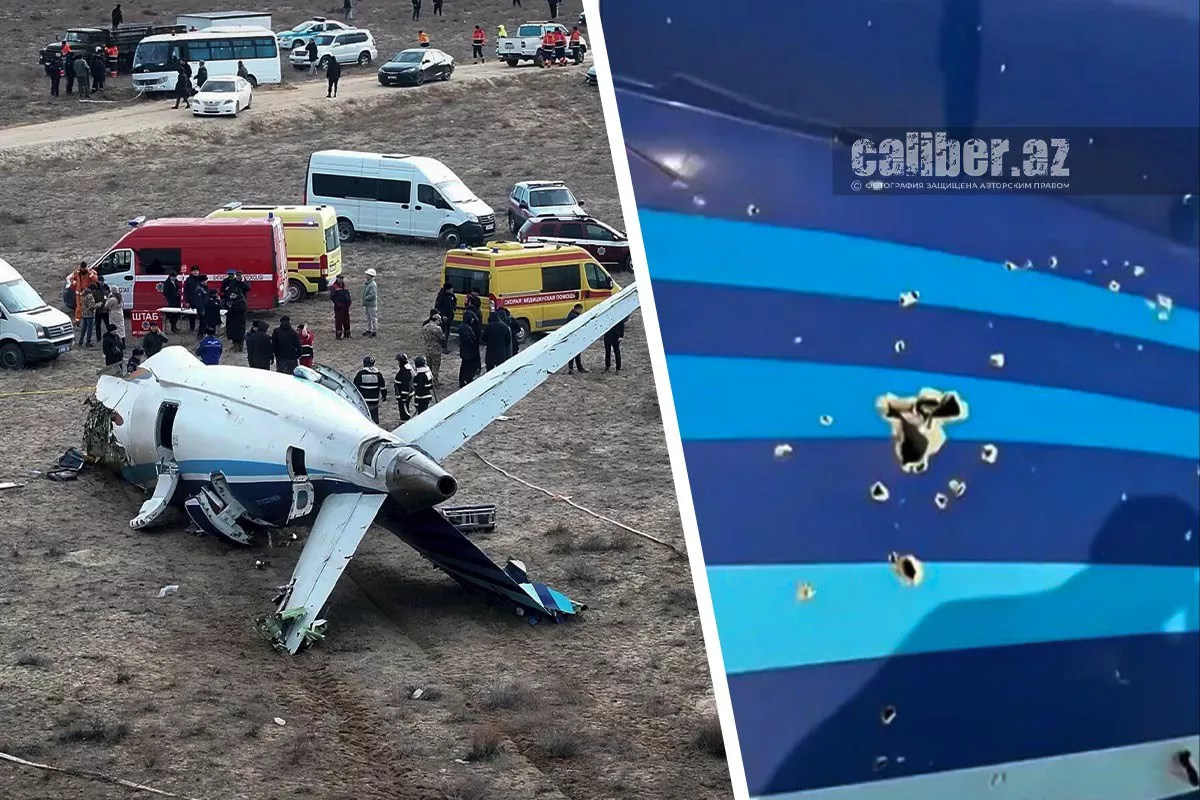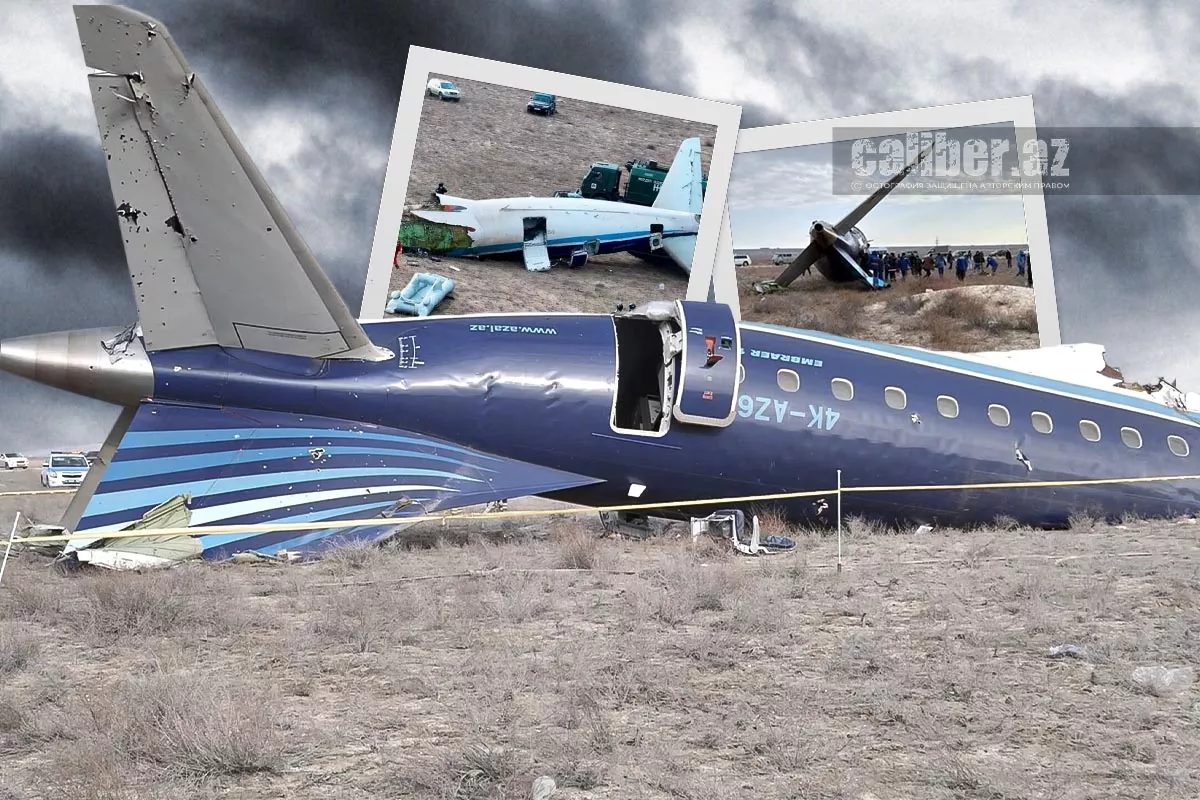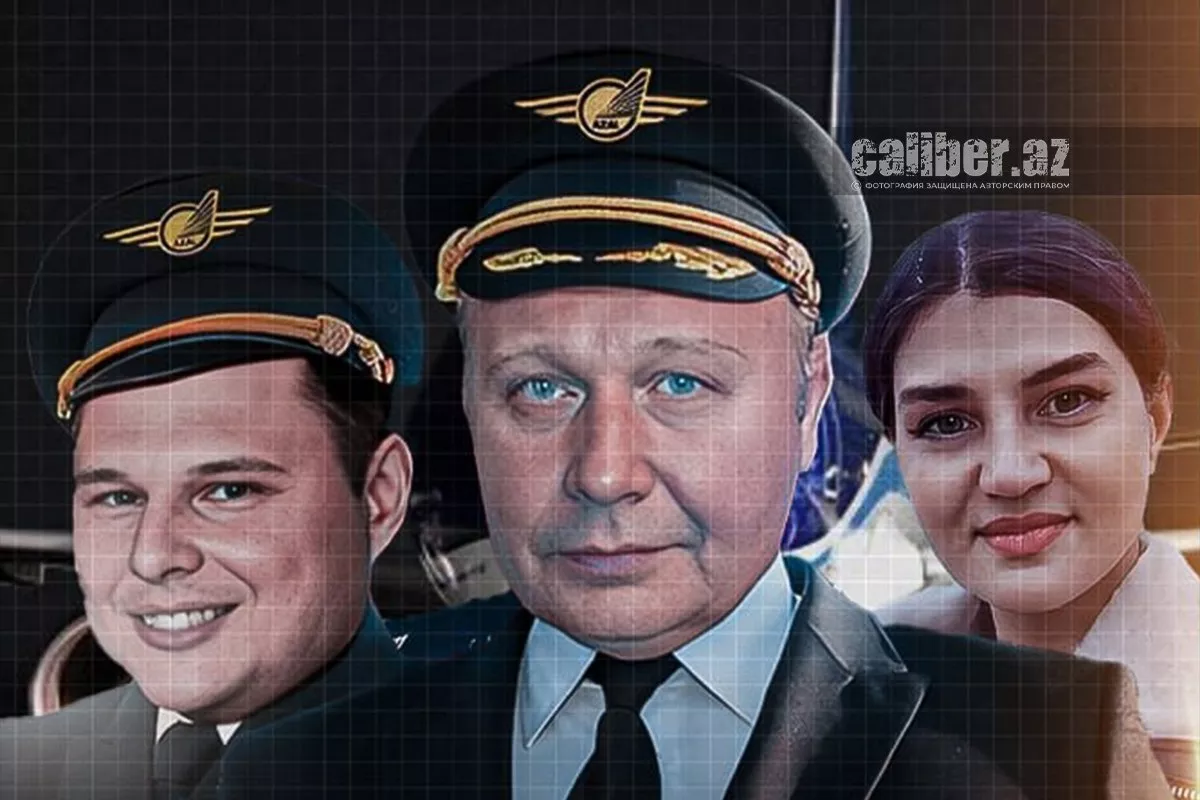Smoke and mirrors: How Russian media obscures real story behind AZAL crash Twisting narrative to fog the truth
The story surrounding the crash of an Azerbaijani passenger plane near Aktau has taken a new turn. Recently, the Russian Telegram channel Baza released a transcript of the communications between Azerbaijani pilots and air traffic controllers in Grozny, Rostov-on-Don, and Aktau.
In this analysis, we will delve into the situation based on the assumption that the transcript is authentic. This assumption is grounded in Baza's reputation for maintaining close ties with Russian security services. Operating under this premise, the focus here will not be on questioning the authenticity of the transcript but rather on examining the distinctive tone in which this information was presented and the conclusions drawn by Baza and a range of Russian media outlets that quickly circulated its publication.
From the outset, it becomes evident that there has been a coordinated effort within the Russian media space to shift the narrative. The attention appears to have been deliberately redirected from addressing the primary causes of the incident to focusing on secondary issues, thereby moving the discussion from causes to effects.

We begin by citing the first passage from the post made by the Telegram channel Baza:
“Baza publishes a full transcript of the conversations between the pilots of the crashed AZAL plane and air traffic controllers. It shows that the crew of Azerbaijan Airlines made all decisions not to land in Grozny, not to fly to Makhachkala, and then to fly back to Baku — and, as a result, fly to Aktau — on their own. Dispatchers offered to land first in Grozny, then in Makhachkala, and provided the crew with information on other Russian airports, but the crew decided not to land there.”
The channel further emphasizes the actions of the crew in its reporting:
“Moreover, it becomes clear from the recordings that the version about the collision with birds, as well as about the exploded gas cylinder on board, was voiced by the crew of the plane in negotiations with the dispatchers.”
This framing reveals a clear tendency to obscure two critical facts. First, the transcript of the communications documents that the crew reported the loss of both GPS signals even before any external impact occurred. According to the transcript, the Azerbaijani crew mentioned this failure no fewer than six times. In other words, the pilots flagged the malfunctioning GPS systems before any external factor was noted.
We do not presume to take on the role of investigators — that is the task of professionals. However, it is worth pointing out that experts consider the probability of such "blinding" of the aircraft due to the operation of electronic warfare (EW) systems to be significant. Notably, during the same time frame, there was an attack by Ukrainian UAVs on Grozny. To counter this, the Russian side initiated the “Carpet” plan which reportedly involved the use of EW systems. The Azerbaijani aircraft, however, was not warned about this operation.
What stands out is the lack of attention paid by Russian media to this critical factor. Instead, the focus is placed solely on the actions of the pilots after the aircraft was subjected to external interference.
For example, the Russian aviation portal avia.pro writes:
“A document published by the Telegram channel Baza shows that the crew made key decisions about the flight route and refusal to land at a number of Russian airports on their own.”
This situation highlights how presenting only part of the truth can distort the bigger picture. It may well be true that the pilots made key decisions about the flight route. However, these decisions were taken under conditions that were heavily influenced by external factors, and they cannot be equated with the root causes of the crash itself.

Two pivotal events shaped the tragedy of the AZAL plane crash. The first, already discussed, was the loss of GPS signals. The second was an external mechanical impact on the aircraft.
In this context, it is surprising to witness the tendency to exaggerate the pilots' initial assumption that the plane was struck by a bird or suffered an oxygen tank explosion. While the pilot-in-command may have suggested a bird strike as a possibility, it is crucial to recognize the rationale behind this assumption. The crew operated under the belief that any other type of mechanical impact — such as one caused by hostile action — was inconceivable. The idea that a passenger aircraft operating under normal conditions could become the target of air defence systems was beyond their imagination.
This leads us to a critical revelation: passenger testimonies confirm that shrapnel wounds were sustained, and the holes observed in the fuselage of the Embraer are consistent with damage caused by shrapnel from air defence shells. Moreover, the Azerbaijani side has reportedly collected shrapnel samples, along with preliminary analysis of the flight recorders, which provide further insights into the circumstances of the crash.
Now, regarding the decisions made by the pilots: the overarching goal of any crew in an emergency is to preserve as many lives as possible. Every decision made by the pilot-in-command was guided by this principle. It is implausible to suggest that the crew would have knowingly or deliberately chosen an unsuitable airport to their own detriment.
Revisiting the conditions under which these decisions were made paints a clearer picture. The crew faced the loss of GPS signals, a mechanical impact on the aircraft, a failure of hydraulic controls, and reduced oxygen levels in the cabin — all of which occurred following the operation of Russian Armed Forces’ electronic warfare (EW) systems and air defence activities. Given these circumstances, the real question is not why the pilots chose not to land in Grozny or Makhachkala but rather what caused the severe damage to the airliner in the first place.
Attempts to shift focus from this critical question — or worse, to remain silent about the underlying cause — are manipulative. Yet such silence is precisely what we now see in Russian media coverage.

It is absurd to suggest that the decisions made by the crew were incorrect. On the contrary, the evidence strongly indicates that the pilot-in-command, by directing the airliner toward Aktau, made the only viable decision under dire circumstances. Conversations with experienced pilots support this conclusion.
Notably, seasoned captain Igor Kshnyakin likely chose Aktau to avoid the potential catastrophe of a poorly controlled aircraft colliding with the mountainous terrain that lay between Grozny, Makhachkala, and Baku. Unlike these areas, the region surrounding Aktau is flat, sparsely populated, and bordered by the Caspian Sea. Flying over the sea provided the option of an emergency water landing if the aircraft became entirely uncontrollable. These considerations demonstrate the crew’s commitment to maximizing safety and minimizing potential casualties.
Shifting the narrative from the initial events that caused the crisis to the decisions made by the pilots, based on the transcript of their communications, is not just erroneous but, arguably, criminally negligent. The blame for the accident does not lie with the crew but with those responsible for the conditions that developed around the aircraft in the skies above Grozny.
The first point of negligence was the failure to warn the Azerbaijani aircraft about the “Carpet” plan and the operation of electronic warfare (EW) systems. The second and far graver act was the criminal negligence of firing on a civilian airliner. As previously mentioned, the root cause of the tragedy was the mechanical damage inflicted on the aircraft by shrapnel from the Russian air defence system.
In light of this, it is imperative for the Russian side to take responsibility for the incident. This includes issuing a formal apology, holding those responsible accountable, and providing appropriate compensation. However, the recent wave of publications in the Russian media, which deliberately shift focus away from these critical issues, does little to foster a transparent and constructive atmosphere for uncovering the true cause of the crash.








